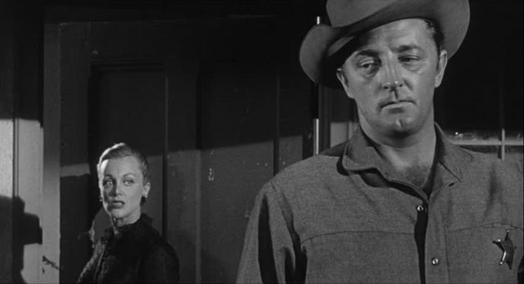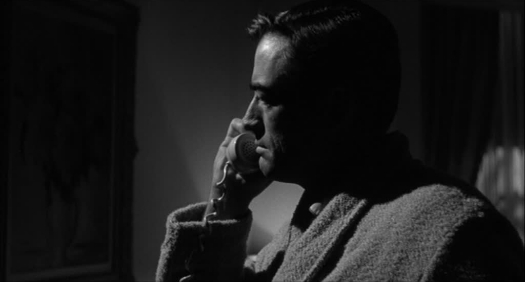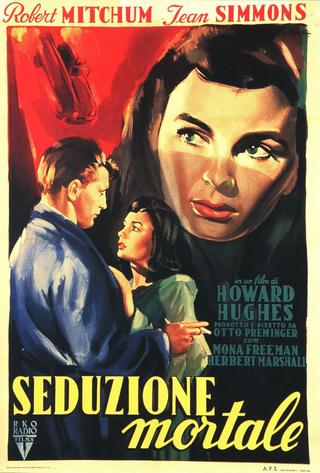If I were to offer the choice of a movie with a thin plot stretched beyond the point of endurance or one so crowded and packed with incident that breathing space is at a premium, which one would you choose? Well, the wise viewer would most likely pick neither and instead plump for something more balanced. As one whose curiosity typically allows wisdom to be elbowed aside, I would probably try the overloaded option. I mean, that one ought to be pacier and potentially more exciting, right? Not necessarily. The Angry Hills (1959) is a movie that has some weighty themes baked into it, but there is frankly too much going on, too many plot developments and too many characters drifting in and out of proceedings. In the end, it loses focus, simultaneously reducing the entertainment value and blurring or trivializing the more serious points it might have made.
The Angry Hills takes place in 1941, on the eve of and then in the period just following the German invasion of Greece. It starts with the arrival in Athens of journalist Mike Morrison.The situation in the city could charitably be described as fluid and he’s keen to move on as soon as possible, or as soon as he’s had the opportunity to clean up and sample some of the local night life at least. Journalists get to know all kinds of people in the course of their work and an old acquaintance of Morrison’s passes on a list of Greeks who will be able to filter information through to British Intelligence in the months and years ahead. The idea is that a pressman will be in a better position to smuggle such a list out of the country before the city is occupied. Morrison frankly wants no part of this but he gets stuck with the list nonetheless. As a result, the movie develops into what is essentially a long chase back and forth across the country with the Germans, and those who would collaborate with them, in hot pursuit of the reluctant courier. As Morrison tries to dodge the Gestapo commanded by the enigmatic Conrad Heisler (Stanley Baker), he is plunged into the interior of the country where he becomes involved with the fledgling partisans trying to organize resistance and has a brief and tragic romance with a peasant girl (Gia Scala). By the by, he ends up back in Athens, still hunted by Heisler and his local stooge Dimitrios Tassos (Theodore Bikel), still looking for a way out and still endangering all those who cross his path.
Director Robert Aldrich was apparently unhappy with the film being recut by producer Raymond Stross, losing 10 minutes or more of footage. He felt it unbalanced the movie, which may be so but I’m not sure it really needed additional scenes. While I can’t claim to know exactly what was trimmed, I suspect it was material that related to Morrison’s first exit from Athens, a section that is papered over somewhat via a voiceover and a few brief shots indicating a longer journey. I do think the film is a little disjointed and there is a clumsiness to the narrative, but more footage in that sequence wouldn’t fix any of those problems. I’d actually go so far as to say the entire in country section with Gia Scala and the partisans could have been excised and not have really harmed the movie. In fact, it might have tightened it up considerably. There are themes touching on betrayal and trust, on the lengths people will go to for the sake of those they love which appear at various points, indeed the whole climactic sequence hangs on just this premise. However, a movie that uses the mechanism of the chase to power its narrative needs to keep moving, and preferably in one direction. What happens in The Angry Hills is that Morrison flees Athens with his enemies in hot pursuit, gets chased through the mountains, and then doubles back to the capital to essentially finish up where he started. It’s all too circular and means that too much happens to too many people for too long and to increasingly little effect. The story is an adaptation, by A I Bezzerides, of a Leon Uris novel; I’ve never read any of the man’s work so I can’t say if that contributes to the general muddle and torpor of it all, but I do know that screen versions of his books tended to be pretty lengthy affairs. Exodus is worthy but that running time of three and a half hours is incredibly taxing, while Topaz remains, in my opinion, by far the dullest and least involving of Alfred Hitchcock’s movies.
While there is no escaping the fact that there are problems with the scripting and structure, the movie does have positives. A glance at the cast list alone ought to attest to that. Robert Mitchum tops the bill as the newsman who claims to believe in little, to have seen too much, yet who experiences something of a spiritual or ethical reawakening. The seeds of a compelling character arc are certainly present but, once again, it’s never given the attention it ought to have received. Mitchum only seems truly involved emotionally in the latter stages, when the effects of the relationship with Gia Scala and the subsequent turn of events become clear. It arrives late and I’m not convinced it’s fully earned. While Gia Scala herself is fine as the village girl who gets under his skin, the romance that grows up between them is a half-hearted one at best. That entire section of the movie should provide the emotional core that supports the final act but the combination of the slowing down of the plot and that slightly lackluster romance weakens it.
A starring role for Mitchum is always a draw, even when it’s not all it could be. Something similar could be said for Stanley Baker, who gets a nice meaty part as the conflicted Gestapo chief. It is the type of role that one would expect to be pretty one-dimensional yet it is far from that. Baker had great presence and he could add layers of menace with the most subtle of glances and gestures, but he could also use that finely modulated voice to inject a quiet authority, a hint of warped civility in this case that makes his character all the more fascinating. His Heisler is easily the most interesting character on show, a potentially cartoonish villain invested with much needed depth. Elizabeth Muller is the woman who connects Mitchum and Baker and as such it’s a pivotal role, but neither the writing nor the performance really exploits that. In support, Theodore Bikel is marvelously sinister and corrupt, willing even to use the charms of his sister to further his aims. As that sister, Jocelyn Lane is stunningly attractive and it’s a pity her part wasn’t expanded. Marius Goring flits in and out of the picture as an effete but dangerous German officer. There are small parts too for both Sebastian Cabot and the recently departed Leslie Phillips, the latter clearly enjoying his view of a surprising (taking into account the era in which the movie was made) and earthily energetic topless cabaret performance by Marita Constantinou.
The Angry Hills has been released on DVD via the Warner Archives in a very attractive anamorphic ‘Scope transfer. Both the cast and the setting caught my attention initially and, as someone who has lived for many years in Athens, I welcomed the fact that the location shooting offered a glimpse of the changes that have occurred to the look of the city over time. The movie overall is a decidedly mixed bag, an odd blend of overcrowded plot with too much incident yet not enough character development to allow the viewer to properly engage or empathize. In short, the cast and location work ensure it remains watchable despite the structural flaws.


























